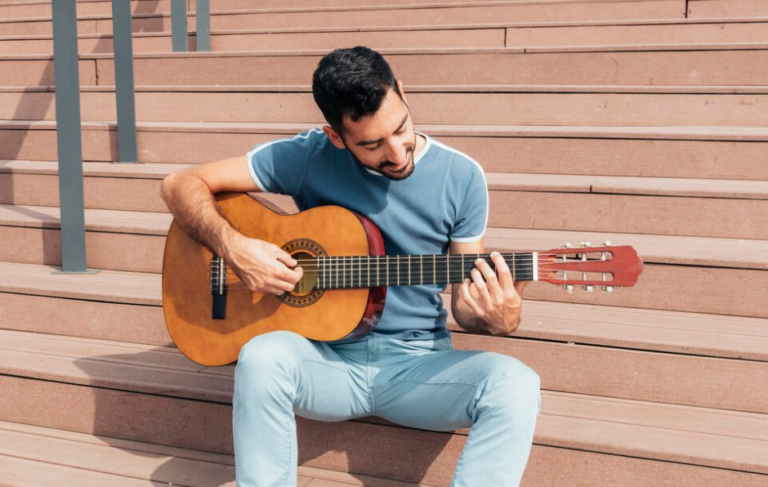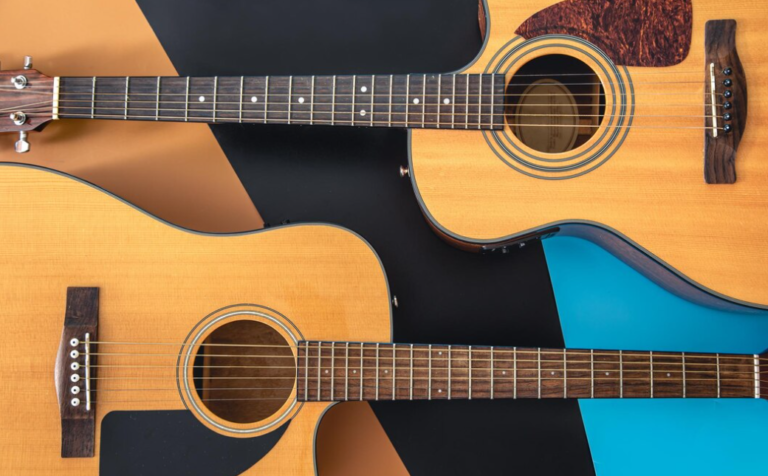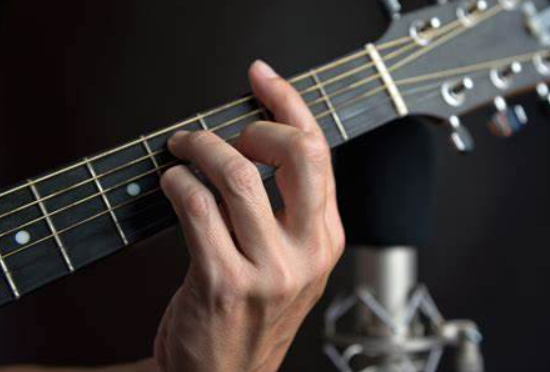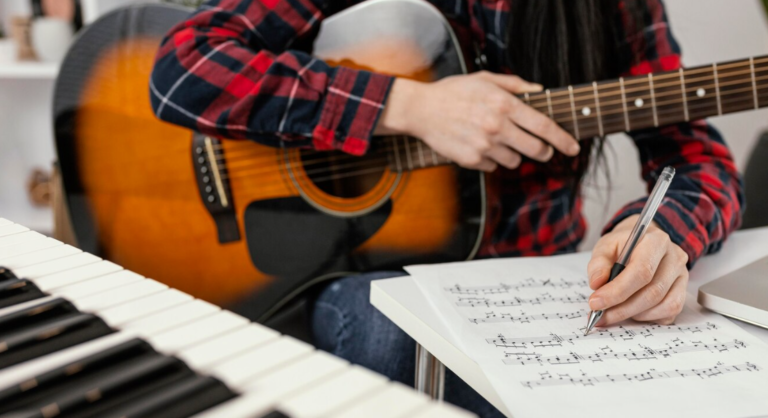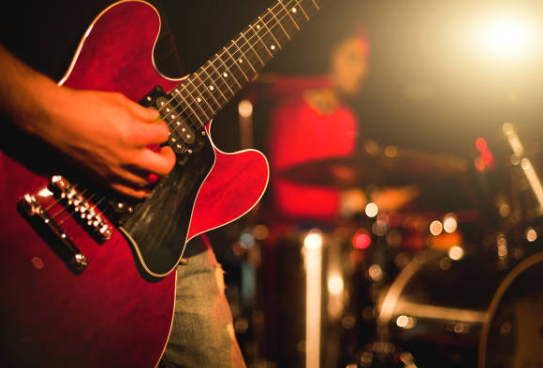How to Hold a Guitar Correctly: Posture and Technique for Beginners
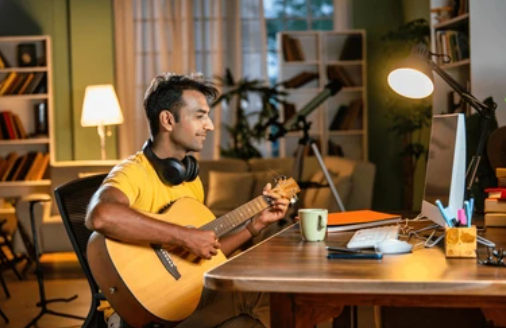
When it comes to learning guitar, most beginners focus on chords, scales, or finger exercises right away. However, one foundational skill often overlooked is simply how to hold the guitar correctly. The right posture can differentiate between an enjoyable practice session and frustrating pain or discomfort. In this guide, I’ll break down the essentials of guitar posture and technique to set you up for success.
Why Posture Matters
Good posture isn’t just about comfort—although that’s a huge bonus. The way you hold your guitar impacts:
1. Playing Technique: Proper posture gives your fingers better access to the fretboard and helps your picking hand strike the strings with accuracy.
2. Endurance: Sitting or standing improperly can lead to strain on your back, shoulders, and wrists, cutting your practice time short.
3. Injury Prevention: Repeatedly practicing with poor posture can lead to long-term issues like carpal tunnel syndrome or repetitive strain injuries.
So let’s set the stage for comfortable and effective practice sessions by covering both seated and standing guitar posture.
1. The Basics of Holding Your Guitar While Seated
Sitting down is the preferred position for most beginners because it offers more stability. Here’s how to do it correctly:
a. Choose a Comfortable Chair
Select a chair with a flat seat and no armrests. Armrests can interfere with your movement and make it harder to reach the strings.
b. Position the Guitar
Place the guitar body on your right thigh if you’re playing right-handed (and left thigh for left-handed players). Keep the guitar close to your body so that it feels secure but avoid hunching over it. The back of the guitar should be against your chest.
c. Keep Your Back Straight
Sitting up straight prevents fatigue and strain. Imagine a string pulling from the top of your head to the ceiling to help maintain this posture. Avoid leaning forward or slumping, as this can lead to neck and shoulder strain.
d. Find Your Left Hand’s Natural Position
Let your left arm relax at your side, and gently bring your hand to the neck of the guitar. Your thumb should rest behind the neck, with your fingers curved and ready to press down on the strings. Avoid gripping the neck too hard; a light touch will help you stay nimble and avoid cramps.
2. How to Hold Your Guitar While Standing
Standing to play adds a bit more challenge but can be rewarding, especially if you plan on performing in the future. Here’s how to keep that perfect posture while standing:
a. Adjust Your Guitar Strap
Use a strap that allows you to keep the guitar at about the same height as when you sit. Many beginners make the mistake of letting the guitar hang low—this might look cool but can hinder your playing ability. Adjust the strap so the guitar sits comfortably against your torso, with the neck positioned around your waist or higher.
b. Maintain a Relaxed Shoulder Position
With the weight of the guitar on your strap, make sure your shoulders are relaxed and not lifted or strained. The guitar should feel secure but not heavy on your shoulder.
c. Keep the Guitar Neck Angled Slightly Upward
For both comfort and reach, angle the neck of the guitar slightly upward. This gives you a natural angle for both strumming and reaching notes higher up the neck.
3. Posture Tips for Both Seated and Standing Positions
a. Wrist Alignment
Keep your wrists as straight as possible to avoid strain. A bent wrist can put unnecessary stress on your tendons and muscles, especially in your fretting hand. Keep a slight natural curve in your wrist but avoid any sharp bends.
b. Avoid Tension
Tension is the enemy of good posture and efficient playing. Check-in periodically during your practice: Are your shoulders creeping up? Is your grip on the neck too tight? Relax and adjust as needed. Staying relaxed improves your flow and accuracy while you play.
c. Use a Footstool (Optional)
If seated, a small footstool under your right foot (for right-handed players) can help elevate the guitar to a more comfortable position. This isn’t necessary for everyone, but if you find that the guitar feels too low, a footstool can help raise the guitar’s body.
4. How Posture Affects Your Playing Technique
a. Better Access to the Fretboard
Good posture lets your hand reach all parts of the fretboard without strain. Whether you’re working on complex chords or speedy scales, correct posture keeps your hand in a relaxed, natural position, making it easier to play accurately.
b. Improved Strumming and Picking Precision
Your strumming or picking hand’s movement is also affected by posture. When you sit or stand correctly, you’ll have better control over your picking hand, allowing you to strike the strings with confidence and rhythm. You’re more likely to play clean notes without unintended sounds or muffling.
c. Building Stamina
Correct posture helps you play longer without feeling fatigued. This is especially important if you’re practicing for extended periods. With a balanced posture, your back, shoulders, and hands will be better prepared to handle longer practice sessions and rehearsals.
5. Troubleshooting Common Posture Mistakes
Here are some common mistakes that beginners make with guitar posture and how to correct them:
- Hunching Over the Guitar: Many new players tend to look down at their hands. This can lead to neck and back strain. To correct this, focus on sitting up straight and limit how much you look down.
- Slouching in the Chair: Slouching may feel comfortable at first, but it restricts your movement and can lead to discomfort. Sit forward slightly, maintaining a straight back.
- Leaning on One Side: Some players lean the guitar to one side, leading to an unbalanced posture. Keep the guitar centered on your lap and check that your shoulders are level.
Final Thoughts: Setting Yourself Up for Success
Holding a guitar correctly might not seem as glamorous as nailing a solo, but it’s foundational to everything else you’ll learn. Taking the time to establish good posture and technique early on will save you from discomfort, prevent injury, and enhance your playing ability in the long run.
So, as you practice, keep these posture tips in mind. Your body will thank you, and your playing will improve as a result!
Happy playing, and remember: posture is power!
Interested in taking your guitar skills to the next level? Click the below and book a free lesson with us! We’re committed to helping you express yourself freely on the guitar without endless scales and theory.
Author: Daniel Powers Jr, the founder of Real Brave™, serves as the chief inspiration to thousands of students in the Real Brave music instruction program. He’s also the visionary behind PracticePad™, an online platform for live one-on-one online music lessons, lesson tracking, and scheduling. Beyond his entrepreneurial pursuits, Daniel leads a non-profit organization that provides formerly homeless children with access to music education, making a profound impact on their lives. His unwavering dedication to music, innovation, and education continues to inspire individuals to reach their fullest potential while creating positive change in communities. Follow Real Brave on all the socials:
youtube.com/@realbraveinc
twitter.com/realbraveinc
https://www.tiktok.com/@realbraveinc
instagram.com/realbraveaudio
facebook.com/realbraveinc


